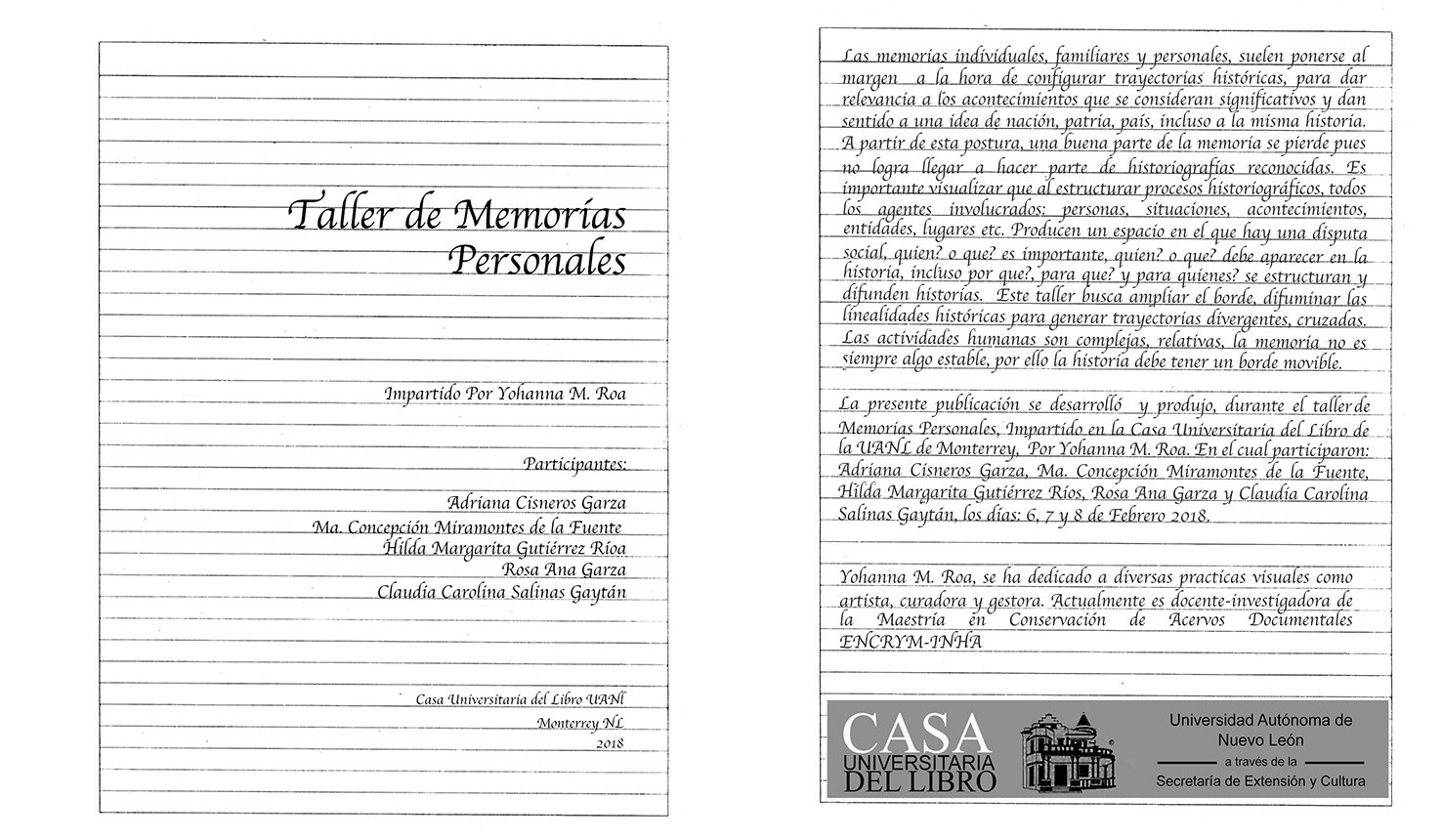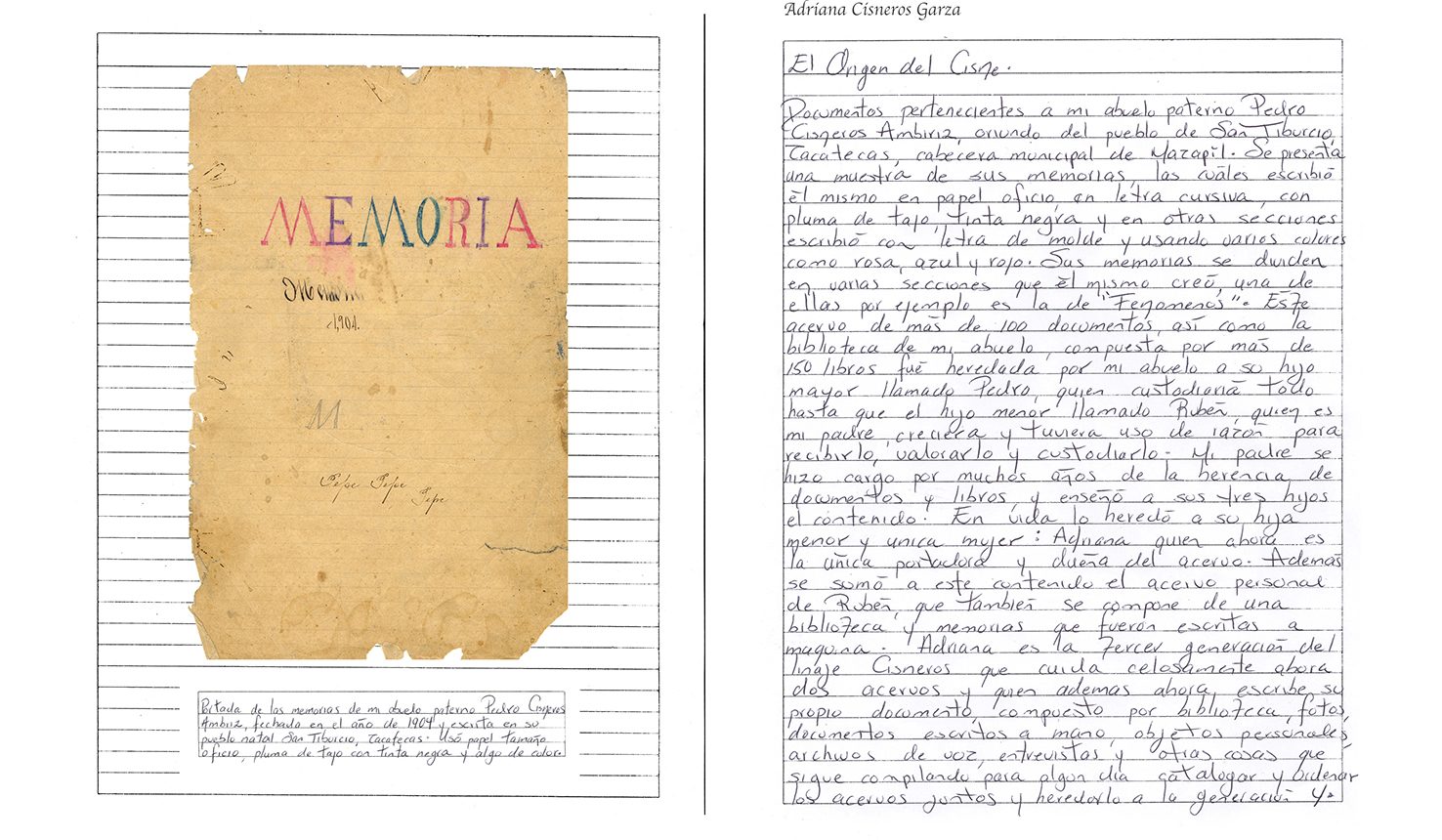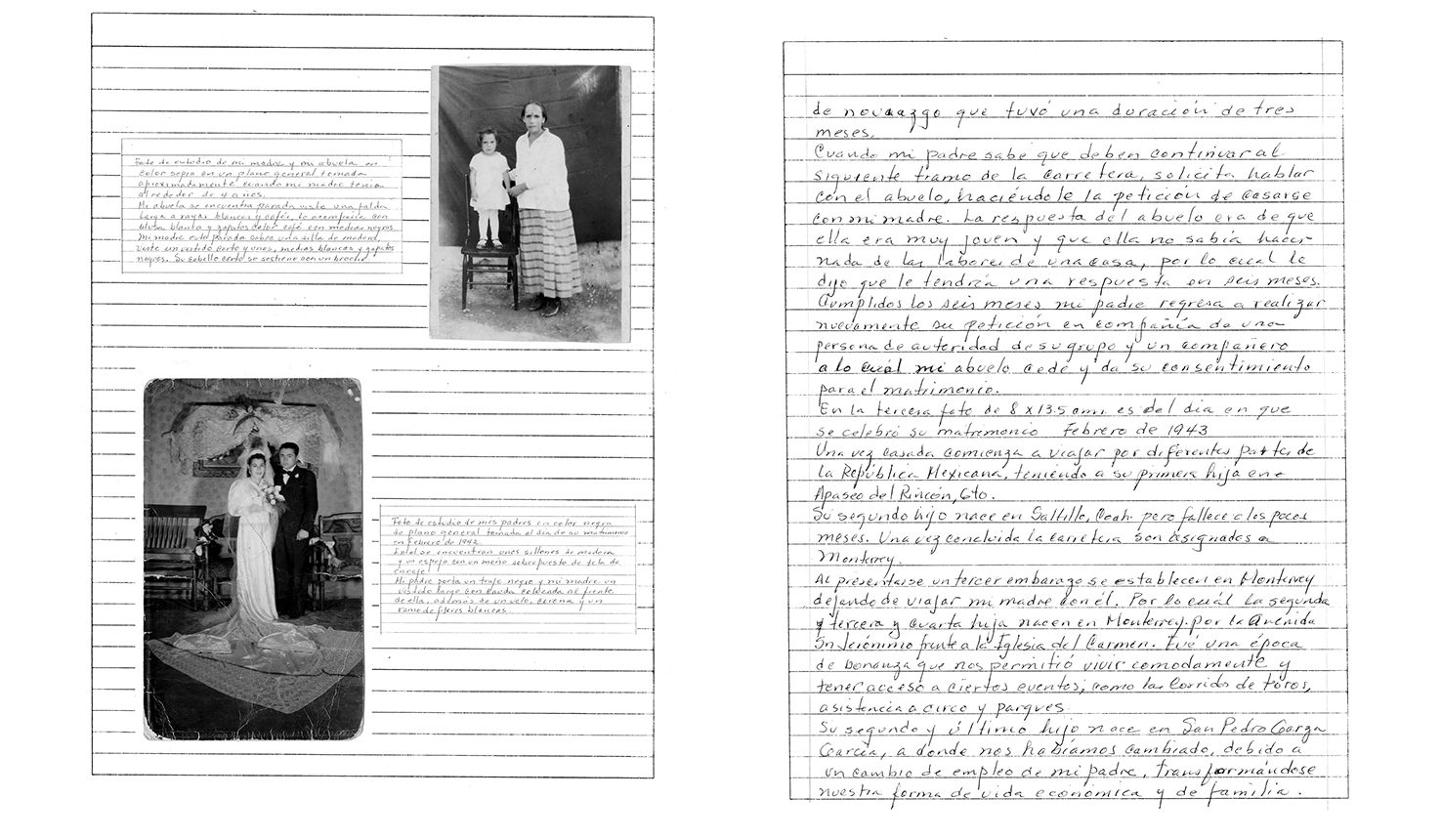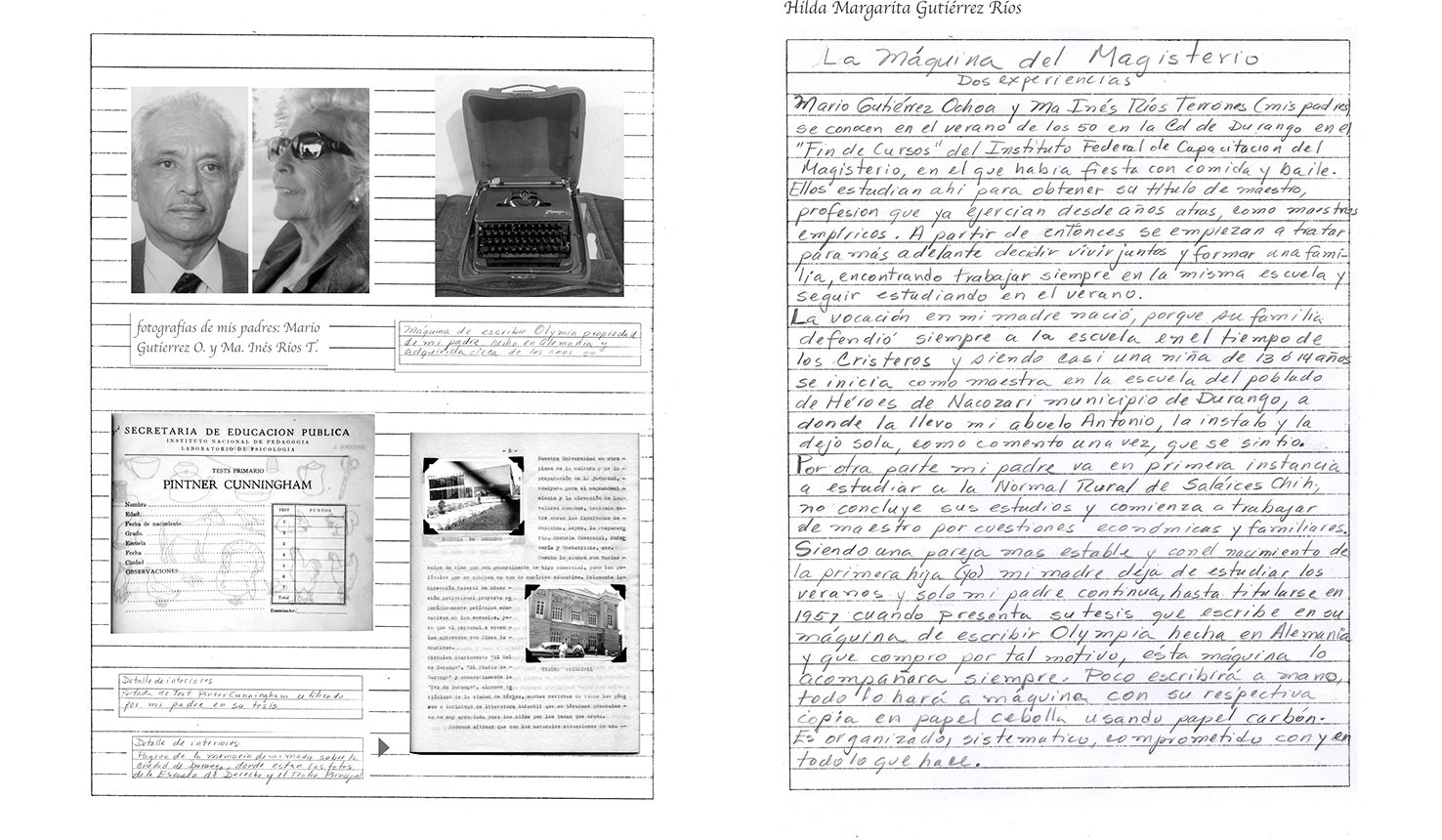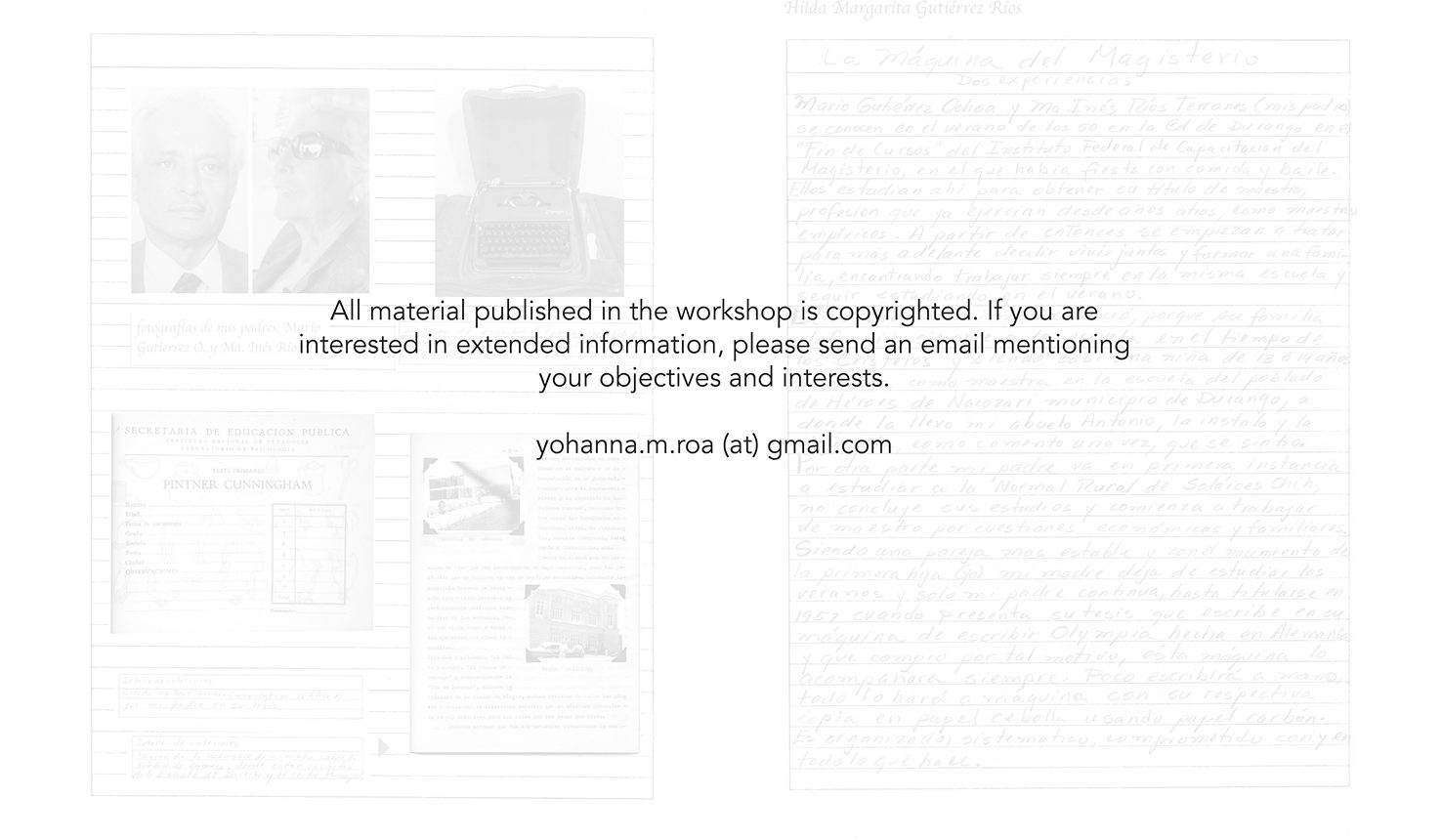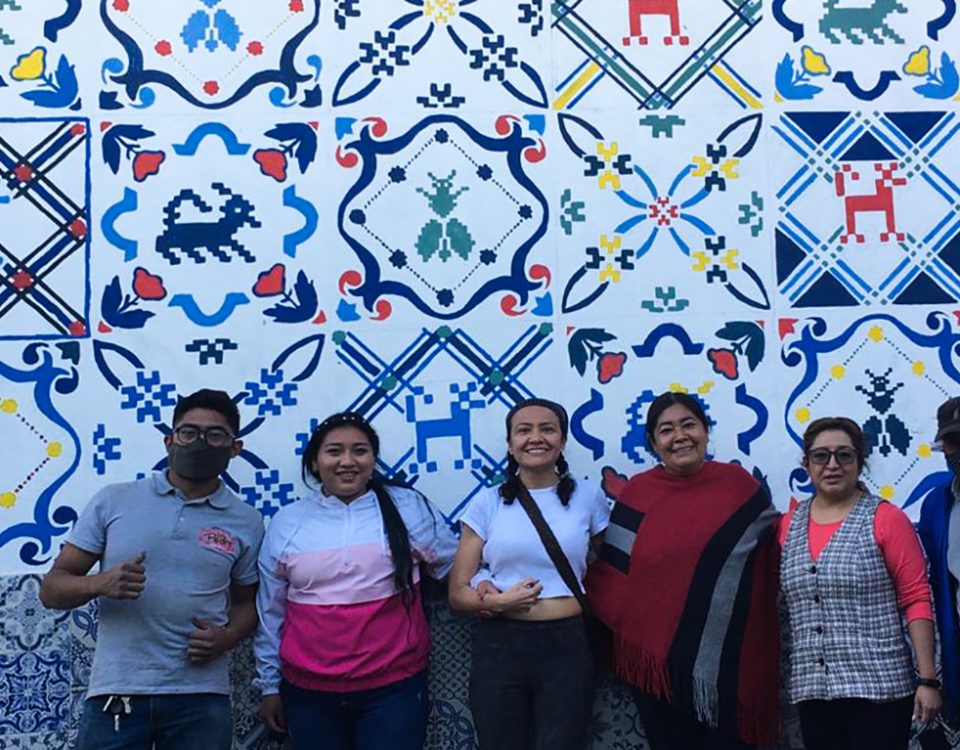Workshop: Personal Memories, Archive and community

NET -RED
13 September, 2021
“Provoking the archive: documentary dialogues”
13 September, 2021
The official history is made up of ideal events, magnificent characters and a desire to remain over time in relation to the human fear of death, something that we can find in almost all monuments: The great pantheons, from the pyramids, the columns , bows or the tomb of the unknown soldier.
From this position, a good part of the memory is lost because it fails to become part of recognized, official or dominant historiographies. In accordance with this, it is important to visualize that when structuring historiographic processes or the consolidation of memories or common pasts, all the agents involved: people, situations, events, entities, places produce a space in which there is a social dispute, who or what? Is it important? Who or what should appear in the story? Even why? What for? and for who it is? stories are structured and disseminated.
This workshop seeks to broaden the edge, blur the historical linearities to generate divergent, crossed trajectories. Human activities are complex, relative, memory is not always stable, so history must have a moving edge.
The workshop has been given in Mexico City, Monterrey and Cali Colombia. Each context has had different characteristics, the dialogues have made it possible to visualize stories that operate or happen in parallel to those known and processed by official history. For example, several participants have arrived with material produced by their mothers, notebooks, research notes, with interventions, photographs, a diary and notes, which were kept, even hidden, because supposedly they were not part of the activities of their own. a woman mother of a family. One of the students in Monterrey had a documentary collection that had been started by her grandfather, who inherited it from his father, and he decided to give it to her, instead of to one of his sons. Documents are valuable: who and why a family member decides to keep and organize them. What do you want to say about these documents, what do others see in them?
Objectives
1. That the participants manage to conceptually configure their personal farchive
2. Produce a group publication, digital or printed from the documents and reports with which you work during the workshop.
3. Provide tools for the recovery of memories that have been lost or the documentation of those that you want to preserve.
1. That the participants manage to conceptually configure their personal farchive
2. Produce a group publication, digital or printed from the documents and reports with which you work during the workshop.
3. Provide tools for the recovery of memories that have been lost or the documentation of those that you want to preserve.



